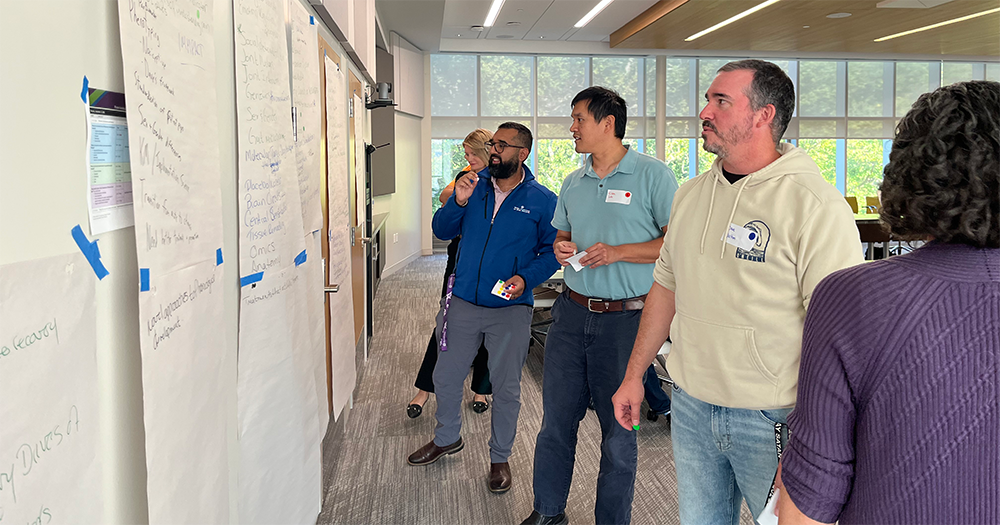Exploring an interdisciplinary "pain consortium" to catalyze excellence and collaboration

After some lively brainstorming in breakout groups, participants came together to take part in a priority setting exercise.
On September 14, members of the Western Institute for Neuroscience (WIN) and the Bone and Joint Institute (BJI) came together to discuss the potential goals, interests, and next steps for a “Western Pain Research Consortium” to catalyze interdisciplinary collaboration and excellence on this topic with high societal relevance.
Schulich professor and Robarts scientist David Seminowicz and physiotherapist David Walton, a professor with Western’s School of Physical Therapy and Lawson scientist, initiated the idea for a consortium earlier this year and received enthusiastic support from the WIN and BJI. The institutes co-hosted its first pain research showcase led by Seminowicz and Walton in June.
The showcase demonstrated that pain researchers across the two institutes share a common interest: creating an environment that fosters interdisciplinary collaboration that will advance pain research After some lively brainstorming in breakout groups, participants came together to take part in a priority setting exercise at Western and support the conceptualization of exciting projects and the development of highly competitive grant applications.
To begin to identify ideas and explore Western’s strength and role in pain research, the September 14 meeting brought together 15 participants that represented a wide breadth of interests and expertise in pain research from across the university. Attending researchers and clinician scientists discussed important questions from current tools and resources, partnerships, funding opportunities, to what a consortium’s potential short- and long-term goals should be and how success might be measured.
After an hour of lively brainstorming in breakout groups facilitated by WIN and BJI staff, participants came together again to listen to summary reports of all the information shared. Participants then began a priority setting exercise. Next steps will involve soliciting additional feedback from other members of the institutes who have an interest in pain research.
Participants left with much food for thought and enthusiasm for future activities to help define and advance Western's current and future role in pain research.

